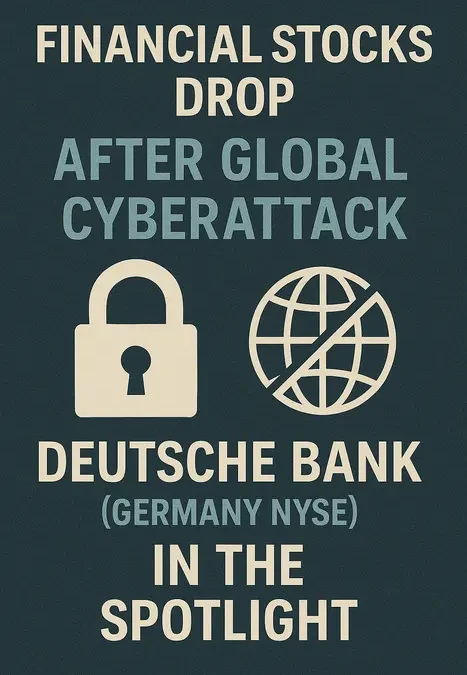Cyberattack Paralyzes Global Banking Operations
In a coordinated cyberattack believed to originate from a state-backed group, banks and financial services providers in 15 countries experienced severe disruptions on Monday. The attack, which experts say is the largest since 2017’s WannaCry, shut down ATM networks, blocked digital payments, and exposed partial client data in Europe, Asia, and Latin America.
U.S. and European financial markets reacted immediately, with leading banking stocks dropping as investors grew concerned about cybersecurity gaps and systemic risk.
Stock Market Reaction
U.S. Financial Stocks:
- JPMorgan Chase (JPM): ▼ 1.2%
- Bank of America (BAC): ▼ 1.4%
- Citigroup (C): ▼ 1.5%
European Financial Stocks:
- Deutsche Bank (Germany): ▼ 2.3%
- Barclays (UK): ▼ 1.8%
- BNP Paribas (France): ▼ 1.9%
The STOXX Europe 600 Banks Index closed down 1.7%, and the S&P 500 Financial Sector Index fell by 1.5%, marking one of the sector’s worst days of the quarter.
What Happened in the Attack?
According to global cybersecurity watchdogs, the attack:
- Targeted SWIFT transaction networks
- Crashed several online banking platforms
- Hijacked customer data servers in at least 5 countries
- Caused $2.1 billion in transactional delays
Preliminary findings suggest a ransomware variant with self-spreading capabilities, leveraging zero-day vulnerabilities in outdated network systems.
Affected countries include:
🇬🇧 UK, 🇩🇪 Germany, 🇫🇷 France, 🇮🇳 India, 🇯🇵 Japan, 🇧🇷 Brazil, 🇨🇦 Canada, 🇮🇹 Italy, and more.
How Banks Are Responding
Most banks are working closely with national cybersecurity agencies and private firms to contain and recover systems. Measures include:
- Disabling external transfers
- Rolling out multi-factor authentication
- Temporary ATM and POS system downtime
- Notification to customers about possible data leakage
The European Central Bank (ECB) has launched an emergency monitoring unit, and U.S. regulators are assessing risks to payment systems like Zelle and FedNow.
Investor Risk Signals
This event has triggered renewed concern about:
- IT infrastructure weaknesses in global banking
- High compliance costs for cybersecurity upgrades
- Potential litigation or fines following client data breaches
- Increased demand for cyber insurance
As a result, financial sector ETFs (like XLF) experienced a pullback, and analysts warn of potential earnings downgrades if reputational and regulatory damage spreads.
Winners Amid the Chaos: Cybersecurity Stocks
Not all sectors suffered. Cybersecurity firms saw sharp gains as demand expectations soared:
- CrowdStrike (CRWD): ▲ 5.4%
- Palo Alto Networks (PANW): ▲ 4.9%
- Darktrace (UK): ▲ 6.1%
- Fortinet (FTNT): ▲ 4.2%
ETF investors turned toward HACK and BUG, both of which saw +2.5% gains in daily performance.
Regulatory and Strategic Fallout to Watch
- U.S. Treasury and ECB meetings on digital banking security
- Revised 2025 Basel III cybersecurity compliance mandates
- Bank-level partnerships with firms like FireEye and IBM Security
- NATO discussions on coordinated cyber defense

